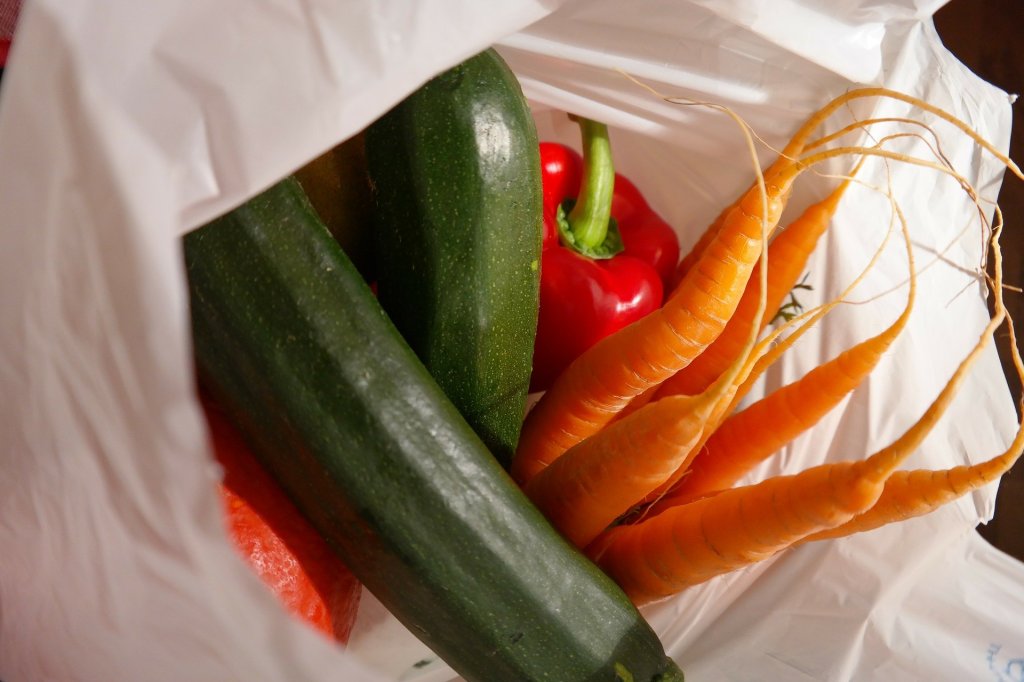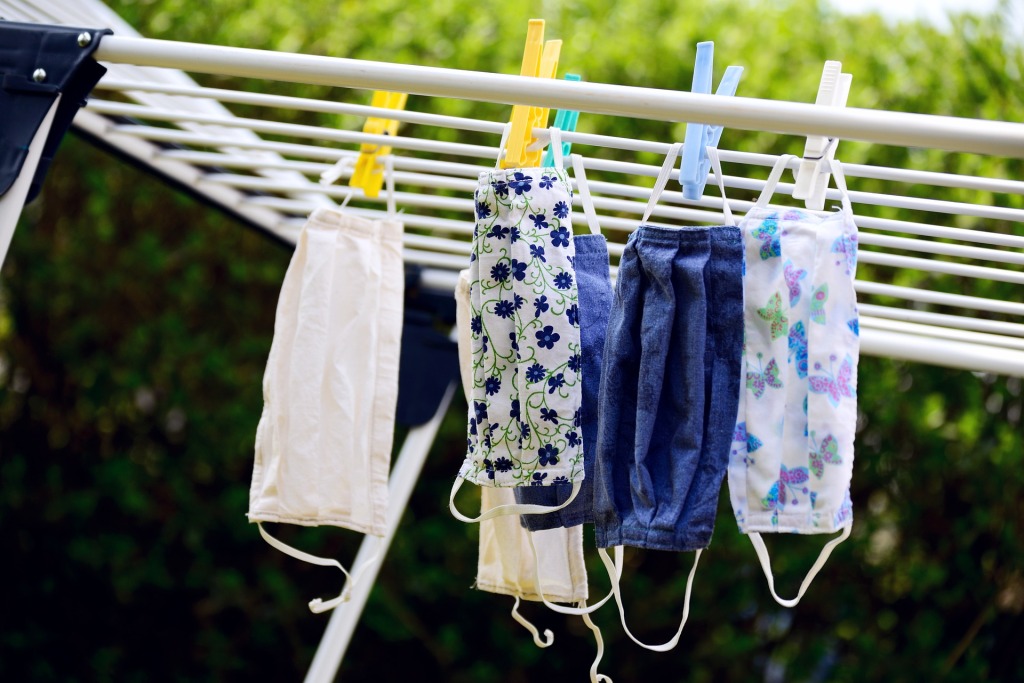The coronavirus pandemic has been a blow to efforts in reducing the consumption of single-use plastics. The lockdown saw consumers, warned they may need to self-isolate for 14 days if symptoms developed, stocking up on long-life foods packaged in plastic. Many companies banned reusable products from their stores, forcing people to revert to single-use plastic bags and disposable cups. On top of that, there’s been a surge in PPE usage worldwide. People are buying single-use gloves and masks to protect themselves, alongside copious amounts of hand sanitiser, soaps, and household disinfectants.
Consumer anxiety has been further heightened by plastic lobbyists, who took the opportunity to announce that reusable bags and cups are nowhere near as safe as the single-use plastics their livelihoods depend upon.
The virus survives in droplets coughed, sneezed or spit out and travels through the air until they fall to the ground or hit something in their way. Once it attaches to a surface, unless it’s a surface it can infect, it’s vulnerable to being destroyed. If you can wash something, you can disinfect it from the coronavirus.
Coronavirus particles can hang around for up to twelve days on plastic surfaces, depending on the strain. The good news is that it’s really quite easy to destroy the virus by disinfecting and sanitising surfaces. Basic soap and water is enough to do the trick if you don’t have access to a disinfectant.
Water alone won’t work particularly well. Coronaviruses are surrounded by a hydrophobic envelope layer that prevents water molecules from breaking open the particle and damaging the virus RNA. It’s the addition of soap that’s key. Most household cleaners are fine to sanitise hard surfaces, and fabric can be cleaned in the washing machine with detergent.
With that, let’s break down some of the risks and benefits of single-use plastics compared to their reusable counterparts.
Plastic bags

Businesses that handle food in the UK are required to follow certain safety procedures, ensuring that products are clean and that the chance of infection is as low as possible. This means that there’s not likely to be any contamination of pre-prepared food and drink, or on the outer packaging of most foods. You may still come into contact with the virus if someone who has it (whether or not they realise) has handled something you’re interacting with. This is why it’s important to maintain distance in shops and only touch products you’re intending to buy.
This goes the same for single-use plastic bags. Nothing makes them inherently more sanitary than anything else in the shop, and unless you yourself are carrying the virus they won’t necessarily be any cleaner than the bags you bring from home. As long as your bags are regularly cleaned (i.e. washing cloth bags and giving plastic ones a quick wipe down with disinfectant) they’re safe to use and you can continue to avoid unnecessary plastic use.
Cups

Again, there are certain standards in the UK that have to be met when you’re being served hot drinks. Your coffee does not have coronavirus floating in it. There’s a risk, just like with supermarket products, that you may touch a surface that’s been contaminated but most shops are carrying out regular sanitation. Staff should be wearing appropriate PPE and everything used to make your drink should have been cleaned before and after.
Dishwashers are perfectly effective at dealing with virus particles, and scrubbing your cup in the sink with some dish soap will also work if you don’t have access to a dishwasher. If you’re regularly cleaning your reusable cup (and we’d hope you’re washing it between coffees), you should have nothing to worry about.
Masks

The latest announcement from the UK government is that face coverings will be compulsory in shops in England from the 24th of July. Until now, the government has held off advising mask use for the general public but that advice is set to change in light of increasing evidence that masks are effective at limiting the spread of the virus at the population level.
There is a difference between cloth face coverings and masks that qualify as personal protective equipment (PPE). Generally, masks that achieve PPE status are single-use, with re-use only allowed under extremely limited circumstances. Disposable masks absorb moisture after prolonged use, meaning that they won’t protect you any more than a cloth mask will once they’ve been compromised. Masks that meet the N95 standard also need to be fitted properly, and are designed for use in healthcare and surgical settings, where they are changed between patients. The blue surgical masks that many people associate with the term “face mask” are for protecting the wearer from splashes or droplets that may come into contact with the mouth and nose area. They are not as effective at blocking airborne particles that can be breathed.
The majority of people won’t have much need for a mask that meets the standards required for use in hospitals and care environments. Adhering to social distancing measures means a cloth mask should be more than adequate in most situations. They should be washable – and you should aim to clean them after every use.
If you’re looking for the best ways to make a mask, Happy DIY Home has tutorials for several types, including a no-sew version.
Gloves
Nitrile or latex gloves are the other item of PPE that members of the public can be seen wearing regularly. These are definitely only single-use – reusing disposable gloves is extremely inadvisable. They are difficult to clean, as washing them in water means that you probably won’t get them dry enough to ensure that they’re not going to provide a breeding ground for bacteria. Sterilising them in extremely hot temperatures or with alcohol-based cleaning products changes the physical properties of the glove, rendering them weaker and more prone to tearing or breakage.
A box of disposable gloves may appear sterile. They’re not – and once you’ve touched a couple of surfaces with gloves they’re not going to be much cleaner than your hands. Gloves in a medical or scientific setting are often used to prevent cross-contamination and so would be changed frequently. Most people wearing gloves are not changing them anywhere near as often as would be needed to prevent the transmission of the virus, and there have been suggestions that gloves may lull people into a false sense of security, making them less likely to follow sanitation procedures that are just as necessary with gloves as without.
It’s more effective, and far kinder to the environment, to go without the gloves and instead ensure you are continuing to wash your hands regularly.
The use of disposable plastics and single-use PPE during the pandemic cannot be avoided in some cases – hospitals and healthcare providers absolutely need them to limit the spread of the virus. It’s really not necessary, however, for the public to avoid reusable and environmentally-conscious options when they’re for personal use. Most of these can be sanitised fairly easily, and single use plastics outside of a medical setting are often no cleaner or safer than their eco-friendly counterparts.
Featured image credit: Image by Willfried Wende from Pixabay

